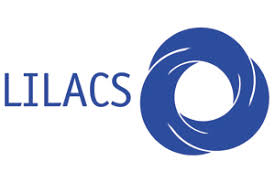Authors
Abstract
This study aims to evaluate different wild fauna release processes carried out in Colombia, in which the monitoring and tracking was documented during the period from 1997 to 2015. Data collection was performed at Environmental Authorities documentation centers, Non-Governmental Organizations (NGOs), and institutions that work with wildlife, and management reports of the 33 Regional Autonomous Corporations during the years 2007-2013, as well as scientific papers published in specialized journals and proceedings of scientific events. Sixty-six case studies were identified of which 47 were releases of mammals (293 specimens), 16 releases of birds (372 specimens) and 3 releases of reptiles (7 specimens). The objective of releasing mammals was mainly the population reinforcement, while in birds and reptiles the objective was directed to conservation programs of endangered species. The releases of mammals and birds corresponded mainly to species categorized by the International Union for Conservation of Nature (IUCN) as minor concern, and released reptiles in the category Critically Endangered (CE). Mammals and reptiles were mainly marked with radio transmitter, and birds were marked with rings. The most used monitoring techniques in mammals and birds were direct observation and telemetry, and telemetry in reptiles. Follow-up and monitoring times for mammals, birds and reptiles varied mainly in the range 1-30 days. According to the defined criteria in each case study, 57.4% of mammal releases, 68.7% of birds and 66.6% of reptiles were considered successful.
References
Arango, H., Ballesteros, S., García, F. & Monsalve, S. (2013). Primer proceso de rehabilitación y reintroducción de un grupo de titís cabeciblancos (Saguinus oedipus). Revista Lasallista de Investigación, 10(1), 49-61.
Armstrong, D. & Seddon, P. (2008). Directions in reintroduction biology. Journal Trends in Ecology and Evolution, 23, 20-25.
Bajomi, B. (2010). Reintroduction of endangered animal species: complementing the IUCN guidelines. Budapest. Collaboration for Environmental Evidence. N°86.
Barrios, R. (2010). Comportamiento de una tropa de Alouatta seniculus (L., 1766) durante el proceso de rehabilitación y liberación en un relicto de bosque seco tropical, Córdoba, Colombia. (Tesis pregrado). Universidad de Córdoba. Montería, Colombia.
Becerra, J., Galindo, A., Orozco, D. L., Trujillo, F. & Castelblanco, N. (2003). La historia de Airuwe. Bogotá, Colombia: Fundación OMACHA.
Bennett, S. et al. (2013). Preliminary observations from a welfare release of woolly monkeys in the Colombian Amazon. In: Soorae, P. (Eds). Global Re-introduction Perspectives: 2013. Further case studies from around the globe. Gland, Switzerland: IUCN / SSC Re-introduction Specialist Group and Abu Dhabi, UAE: Environment Agency-Abu Dhabi (pp. 229-234).
Caicedo-Herrera, D., Mona-Sanabria, Y. & Espinosa-Forero, R. (2014). Rescate‚ rehabilitación y liberación al medio natural del manatí Trichechus manatus en el Caribe colombiano. Un programa de conservación. IV Congreso Colombiano de Zoología. Cartagena de Indias, Colombia - diciembre 1 al 5 de 2014.
Caicedo-Herrera, D. et al. (2013). Aplicación de tecnologías VHF y satelital para seguimiento de manatíes Trichechus manatus como una estrategia para su manejo y conservación en la cuenca baja y media del río Sinú, departamento de Córdoba En: Trujillo, F., Gartner, A., Caicedo, D., Diazgranados, C. Diagnóstico del estado de conocimiento y conservación de los mamíferos acuáticos en Colombia. (pp. 273-311) Fundación Omacha. Bogotá, Colombia.
Camargo-Rodríguez, N. (2013). Informe final rehabilitación y liberación (mono ardilla) en la reserva “La Marteja” Casanare. (Tesis pregrado). Universidad Nacional de Colombia. Bogotá, Colombia.
Camargo-Sanabria, A., López, H. F. & Sarmiento-Parra, D. (2005). Evaluación preliminar del área de acción y patrón de actividad del venado cola blanca (odocoileus virginianus), como parte de una alternativa de manejo ex situ en un bosque seco tropical (Cundinamarca, Colombia). Acta Biológica Colombiana, 10(1), 84-85.
Capera, V. & Brieva, C. (2014). Liberación y seguimiento a loras Amazona ochrocephala en un sector de la cordillera occidental en Armero; departamento del Tolima‚ Colombia. En Memorias IV Congreso Colombiano de Zoología. Diciembre 1 al 5 de 2014. Cartagena de Indias, Colombia. p. 286-287.
Ceballos, G. et al. (2015). Accelerated modern human-induced species losses: Entering the sixth mass extinction. Science Advances, 1(5), 1-5. DOI: 10.1126/sciadv.1400253.
Cepeda, I. et al. (2010). Proceso de reubicación y monitoreo de dos individuos de Ocelote (Leopardus pardalis) en la Reserva Natural Sanguaré (Sucre, Colombia). CARSUCRE, PROCAT, Fundación herencia ambiental caribe, reserva natural Sanguaré. Boletín Alúna, 3(2), 39-42.
Choperena-Palencia, M. C. & Mancera-Rodríguez, N. J. (2016). Lineamientos para el seguimiento y monitoreo post-liberación de fauna silvestre rehabilitada. Revista U.D.C.A Actualidad & Divulgación Científica, 19(2), 411-424.
Colonia-García, O. C. (2009). Acciones para la conservación de la especie Potos flavus y seguimiento a un grupo de monos cariblancos (Cebus albifrons) previamente reubicados en el municipio de Caracolí, área de influencia del POMCA del río Nus. Orden de servicio 4589. Medellín, Colombia: CORANTIOQUIA.
Cuartas-Calle, C. (2011). Liberación, reubicación y monitoreo de primates en el área de jurisdicción de CORANTIOQUIA. Marco convenio del Comité Interinstitucional de Flora y Fauna de Antioquia CIFFA contrato 8883. Medellín, Colombia: CORANTIOQUIA.
Delfín, C., Gallina, S. & López, C. (2009). Evaluación del hábitat del venado cola blanca utilizando modelos espaciales y sus implicaciones para el manejo en el centro de Veracruz, México. Tropical Conservation Science - TCS, 2(2), 215-228.
Díaz-Parra, H. & García-Arcila, M. (2005). Determinación de la presencia de nematodos gastrointestinales en un grupo de micos ardilla (Saimiri sciureus albigena; Von Push 1872) liberados en el departamento del Meta. (Tesis pregrado). Universidad de la Salle. Facultad de Medicina Veterinaria. Bogotá, Colombia.
Duarte-Sánchez, L. F. & Díaz-Martínez, J. A. (2009). Conducta de forrajeo y social en dos especies de loros recuperados del tráfico ilegal. Mesoamericana, 13(1), 12-22.
Echeverry, Y. (2010). Monitoreo y talleres del cóndor andino Vultur gryphus liberado en el Parque Nacional Natural Los Nevados y su zona de amortiguador. Contrato 097-2010 Manizales, Colombia: CORPOCALDAS.
Estrada, C. (2005). Seguimiento poblacional de borugas (Agouti paca) en el piedemonte Amazónico colombiano. Revista Facultad de Ciencias Agropecuarias, 1(7), 12-17.
Estrada, J. (2014). Finding correlations among successful reintroduction programs: An analysis and review of current and past mistakes. (Master’s Thesis). University of Michigan. Michigan.
Feliciano-Cáceres, O. (2004). Colombia Programa para la Conservación del Cóndor Andino en Colombia. Bogotá, Colombia. Fundación Bioandina.
Fischer, J. & Lindenmayer, D. B. (2000). An assessment of the published results of animal relocation. Biological Conservation, 96, 1-11.
Flórez, A. & Maldonado, A. (2002). Rehabilitación, liberación gradual y seguimiento post-liberación, de un grupo de monos cariblancos (Cebus albifrons versicolor) en el Magdalena Medio colombiano. Bogotá, Colombia. Unidad de Rescate y Rehabilitación de Animales Silvestres URRAS.
Fundación Mensajeros del Sol (FUMSOL). (2008). Censo simultáneo de cóndor andino Vultur gryphus en el Parque Nacional Natural de Los Nevados. Contrato 068-2008. Manizales, Colombia. CORPOCALDAS.
Fundación RenaSer & Corporación Autónoma Regional de Cundinamarca (CAR). (2000). Programa para la conservación del cóndor andino colombiano. Informe parcial de actividades en el núcleo de repoblación del PNN Chingaza y jurisdicción de la CAR. (Convenio 258-1999). Bogotá, Colombia. CAR.
Fundación RenaSer & Corporación Autónoma Regional de Nariño (Corponariño). (2000). Programa para la conservación del cóndor andino colombiano. Informe parcial de actividades en el núcleo de repoblación del sector de Chiles y jurisdicción de CORPONARIÑO. (Convenio 065-1999). Bogotá, Colombia. CORPONARIÑO.
Fundación RenaSer & Corporación Autónoma Regional del Cauca (CRC). (2000). Programa para la conservación del cóndor andino colombiano. Informe parcial de actividades en el núcleo de repoblación del Páramo Natural Nacional Puracé y jurisdicción de la CRC (Convenio 199-1999). Bogotá, Colombia. CRC.
Gamboa, L. M. & Suárez, C. (1997). Desarrollo y evaluación de un protocolo de la rehabilitación y liberación de Cebus apella. (Tesis pregrado). Universidad de la Salle. Facultad de Zootecnia. Bogotá, Colombia.
García-Grasso, R. (1997). Rehabilitación, reproducción y reintroducción en un grupo de tití gris cautivo (Saguinus leucopus). Orden: primates. Familia (callithricidae) a un ambiente natural. (Tesis pregrado). Universidad de Antioquia. Departamento de Biología. Medellín, Colombia.
Gedir, J., Everest, T. & Moehrenschlager, A. (2004). Evaluating the Potential for Species Reintroductions in Canada. Proc. Species at Risk 2004 Pathways to Recovery Conference. 2 March 2-6, 2004, Victoria, B.C.
Godoy, J. 2009. La genética, los marcadores moleculares y la conservación de especies. Ecosistemas, 18(1), 23-33.
Gómez, J. R., Jorgeson, J. & Valbuena, R. (1999). Report on the rehabilitation and release of two giant river otter (Pteronura brasiliensis) pups in the bita river (Vichada, Colombia). IUCN otter specialist group Bulletin, 16(2), 86-89.
González-Guzmán, P. (2011). Informe de monitoreo y seguimiento de un grupo de Saimiri sciurus albigena en el área forestal “La Marteja”. Bogotá, Colombia. Unidad de rescate y rehabilitación animales silvestres URRAS.
Guy, A., Curnoe, D. & Banks, P. (2013). A survey of current mammal rehabilitation and release practice. Biodiversity and Conservation, 22, 825-837.
Harrington, L., Moehrenschlager, A., Gelling, M. P., Hughes, J. & Macdonald, D. W. (2013). Conflicting and Complementary Ethics of Animal Welfare Considerations in Reintroductions. Conservation Biology, 27(3), 486-500.
IUCN/SCC. (2002). Guidelines for placement of confiscated animals. Suecia. Preparado por grupo de especialistas de Re-Introducción de SSC (Species Survival Commission). 24p.
Jaramillo, A. L. (2010). Patrón de movimientos de tres individuos rehabilitados de tití gris, Saguinus leucopus durante los primeros tres meses posteriores a su liberación en un bosque del departamento de Caldas. (Tesis pregrado). Universidad Nacional de Colombia. Bogotá, Colombia.
Jaramillo-Fayad, J. C., Pérez-Torres, J. & Sarmiento, D. M. (2003). Cambios del comportamiento como respuesta a la supresión de alimento suplementario en una población semicautiva de Saimiri sciureus (mono ardilla). Revista Mastozoología Neotropical, 10(2), 261-268.
Jiménez, I. & Cadena, C. D. (2004). Por qué no liberar animales silvestres decomisados. Ornitología Colombiana, 2, 53-57.
Kleiman, D., Stanley, M. & Beck, B. (1994). Criteria for reintroductions. In Olney, P. J. S., Mace, G. M. & Feistner, A. T. C. (Eds.). Creative Conservation: Interactive management of wild and captive animals. London, England: Chapman & Hall.
Leal, A., Granados, L., Zerda, E. & Brieva, C. (2010). Liberación y seguimiento de dos Grupos de Tití Gris (Saguinus leucopus) en el Departamento de Tolima. Revista de la Facultad de Medicina Veterinaria y de Zootecnia, 57, 132-143
Llano, M. E., Moreno, S. & Plese, T. (2002). Construcción de un micro hábitat para la rehabilitación de osos perezosos y reubicación y seguimiento a un grupo de individuos de Bradypus variegatus y Choloepus hoffmanni. Contrato 3478. Medellín, Colombia. CORANTIOQUIA.
Mancera-Rodríguez, N. J. & Reyes, O. (2008). Comercio de fauna silvestre en Colombia. Revista Facultad Nacional de Agronomía, 61(2), 4618-4645.
Mateus, D. & Brieva, C. (2010). Informe de liberación de cuatro monos maiceros (Cebus apella). Bogotá, Colombia. Unidad de rescate y rehabilitación de animales silvestres URRAS y Corpoorinoquia.
Medina, C. R. (2000). Protocolo para la rehabilitación y liberación de Psitácidos (loros) de las especies Amazona amazonica y A. ochrocephala, WSPA-Colombia. (Tesis pregrado) Universidad Distrital Francisco José de Caldas. Bogotá, Colombia.
Ministerio de Ambiente, Vivienda y Desarrollo Territorial (MAVDT). (2006a). Programa de conservación del cóndor andino Vultur gryphus en Colombia. Plan de acción 2006-2016. Bogotá, Colombia. MAVDT.
Ministerio de Ambiente, Vivienda y Desarrollo Territorial (MAVDT). (2006b). Programa nacional para la conservación del oso andino (Tremactor ornatus). Bogotá, Colombia. MAVDT.
Morales-Betancourt, D. (2011). Report of an Adaptive Reintroduction of a Juvenile Giant Otter (Pteronura brasiliensis). IUCN/SCC Otter Specialist Group Bulletin, 28(1), 1-60.
Morales-Betancourt, D., García, A., Amaya, C. & Rodríguez, P. (2009). Informe técnico: fauna liberada y en proceso de rehabilitación en la Reserva Natural Bojonawi. Bogotá, Colombia. Fundación Omacha-Fundación Horizonte Verde.
Moreno, S., Plese, T., Gómez, C. & Builes, D. F. (2004). Implementación y coordinación de un sistema de monitoreo remoto de fauna silvestre. (Contrato 4267-2002). Medellín, Colombia. Fundación UNAU, CORANTIOQUIA.
Nassar, F. et al. (2004). Informe final rehabilitación y liberación de un grupo de monos cariblancos Cebus albifrons versicolor. Bogotá, Colombia. Centro de Primatología Araguatos.
Nisperuza-Montes, J., Caicedo-Herrera, D. & Espinosa-Forero, R. (2014). Rehabilitación y seguimiento post-liberación de un grupo de cinco individuos de titi (Saguinus oedipus) en Sahagún Córdoba. Memorias IV Congreso Colombiano de Zoología. Dic 1-5 de 2014. Cartagena de Indias, Colombia.
Núñez, M., & Núñez, O. (2010). Seguimiento y monitoreo de 9 ejemplares del cóndor andino en jurisdicción de CORPOBOYACÁ. (Orden de servicio 089-2009). Tunja, Colombia. COPOBOYACÁ.
Ortiz-Andrade, C. A. (2012). Desarrollar la reintroducción de venado cola blanca en la cuenca del río Chinchiná. (Contrato 197- 2012). Manizales, Colombia. CORPOCALDAS.
Ortiz-López, M. (2004). Resultado final de la campaña de recuperación y liberación de tinguas azules en Bogotá D.C. 2003-2004. Bogotá, Colombia. Departamento Técnico Administrativo del Medio Ambiente-DAMA.
Oyler-Mccance, S. & Leberger, P. (2012). Conservation genetics and molecular ecology in wildlife management En: Silvy, N. The Wildlife Techniques Manual Research. Baltimore: Johns Hopkins University Press. 526-580p.
Pérez, J. (2005). Relaciones interespecíficas de un grupo de micos maiceros cariblancos Cebus albifrons versicolor durante los procesos de rehabilitación y liberación. (Tesis pregrado). Pontificia Universidad Javeriana. Bogotá, Colombia.
Primack, R. (2001). Problemas de las poblaciones pequeñas. En: Primack, R. B., Rozzi, R., Feinsinger, P., Dirzo, R. & Massardo, F. Fundamentos de conservación biológica: perspectivas latinoamericanas. Fondo de Cultura Económica, México D.F. Pp. 363-384.
Reading, R., Miller, B. & Shepherdson, D. (2013). The Value of Enrichment to Reintroduction Success. Zoo Biology, 32(3), 332-341.
Rodríguez, D., Feliciano, O. & Rodríguez, C. (2005). Análisis histórico sobre el origen y el destino final de oseznos capturados en Colombia. Informe técnico. Bogotá, Colombia Fundación Wii, Fundación Biocolombia y MAVDT.
Ruiz-García, M., Banguera, E., Gálvez, H. & Álvarez, D. (2003). Discriminación de especies de los géneros Saimiri y Aotus mediante las técnicas de RAPDs y STRPs: Un estudio preliminar para la identificación de diferencias interespecíficas. En: Nassar, F, Pereira, V, Savage, A. (eds). Primatología del Nuevo Mundo: Biología, Medicina, Manejo, Conservación. Ed. Centro de Primatología Araguatos (Bogotá). p 207-217.
Seddon, P. (1999). Persistence without intervention: assessing success in wildlife reintroductions. Trends in Ecology and Evolution, 14(12), 503.
Seddon, P., Armstrong, D. & Malone, R. (2007). Developing the Science of Reintroduction Biology. Conservation Biology, 21(2), 303-312.
Silva-Herrera, J. (2015). La UN liberó cuatro cocodrilos en la Sierra de La Macarena. UN Periódico. No. 194 noviembre de 2015 (pp. 12-13). Bogotá, Colombia. Unidad de Medios de Comunicación-Unimedios.
Solano, K. & Moreno, P. (2012). Informe de rehabilitación y de un grupo de tití gris en Armero Guayabal Tolima. Bogotá, Colombia. CORTOLIMA, Universidad Francisco José de Caldas. Unidad de Rescate y Rehabilitación de Animales Silvestres URRAS.
Soto-Calderón, I. D. et al. Population genetic structure of the white-footed tamarin (Saguinus leucopus) and implications for conservation. Abstracts of the Thirty‐Eighth Annual Meeting of the American Society of Primatologists, Bend, OR June 18‐21, 2015. American Journal of Primatology, November 2015. p 97.
Unidad de Rescate y Rehabilitación de Animales Silvestres (URRAS). (2013). Análisis comportamental de Aotus griseimembra en cautiverio y semicautiverio informe de liberación Aotus griseimembra. Bogotá, Colombia. URRAS, CORTOLIMA.
Vargas, O. (2011). Área de acción, preferencia de hábitat y hábitos alimentarios de Trachemys callirostris callirostris en la ciénaga de Momil, Córdoba - Colombia. (Tesis pregrado). Universidad de Córdoba. Montería, Colombia.
Vélez-Trujillo, C. M. (2007). Monitoreo y censo de dos poblaciones de monos aulladores (Alouatta seniculus) en dos áreas de reservas e intereses de CORANTIOQUIA. Medellín, Colombia. CORANTIOQUIA.
Wimberger, K., Downs, C. T. & Boyes, R. S. (2010). A survey wildlife rehabilitation in South Africa: is there a need for improved management? Animal Welfare, 19(4), 481-499.
Zamora-Abrego, G., Manríquez-Morán, N., Ortiz-Yusty, C. & Ortega-León, A. (2013). Uso de técnicas moleculares como herramienta para conservar la diversidad biológica. En: Biología molecular aplicada a la producción animal y la conservación de especies silvestres. Medellín: Ed. Universidad Nacional de Colombia, pp. 318-387.
Zerda, E., Ojeda-Holguín, S. & Casas-Martínez, P. (2014). Contribución al conocimiento de la ecología del comportamiento de individuos en cautiverio y liberados de oso palmero Myrmecophaga tridactyla en el Bioparque los Ocarros Y Guaicaramo S.A. Vereda las Moras Municipio Barranca de Upía, Meta. Bogotá, Colombia. Universidad Distrital Francisco José de Caldas.


 PDF (Español)
PDF (Español)
 FLIP
FLIP
 HTML (Español (España))
HTML (Español (España))



























